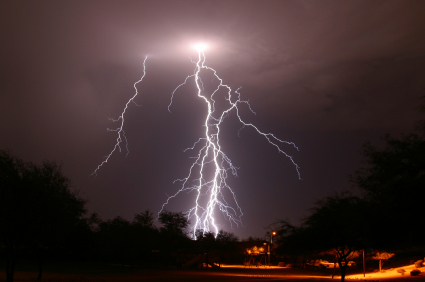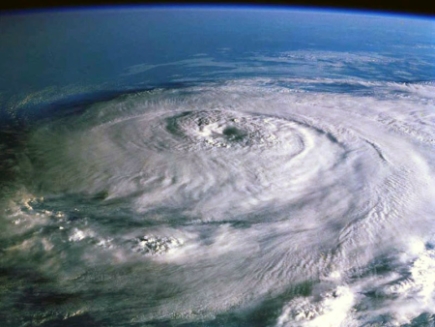 Thunderstorms are very common in cold fronts and are accompanied by rain, thunder and lightening. They develop in three noticeable stages. The first stage is when warm, damp air rises, causing the water vapor within the air to condense, forming a cumulus cloud. The second stage is where condensation continues as the cloud ascends and becomes a dark cumulonimbus cloud. Bulky rain and hailstones could begin to fall from this cloud. The final stage is when the strong downdrafts stop air currents from rising. Thunderstorms dissipate as the supply of water vapor decreases. |
 The most violent, smallest and short-lived severe storm is a tornado. Tornadoes are destructive, rotating columns of air that have very high wind speeds and are visible as funnel-shaped clouds. These form when thunderstorms meet high altitudes of horizontal winds. These winds cause the ascending air in the thunderstorm to rotate. The funnel of tornadoes frequently rise and touch down onto the ground again but a short distance away from the previous touch down. These storms usually cover paths no more than one hundred miles wide. It is common for everything in it's path to be destroyed. |
 Hurricanes only develop over warm, tropical oceans. They begin when warm, moist air over the ocean rises at a relatively quick speed. When moisture in the rising warm air compacts, a large amount of energy in the form of latent heat is released. This heat increases the fury of the rising air. Fully developed hurricanes each consist of a series of thick cumulonimbus cloud bands that spiral upward around the eye of the storm. The winds then increase towards the center of the storm, reaching speeds of up to 275 km/h. Hurricanes are the most destructive storms that occur on Earth. The most dangers facet of a hurricane is the rising sea level that develops. |